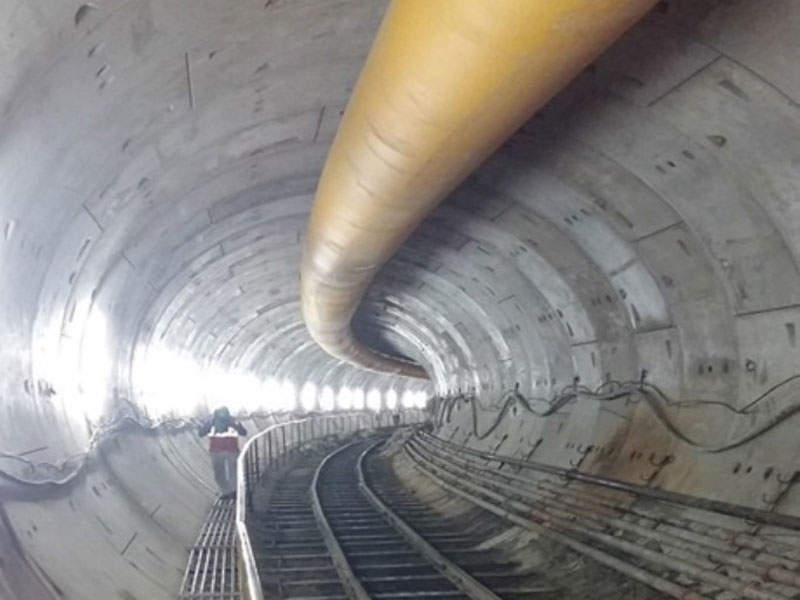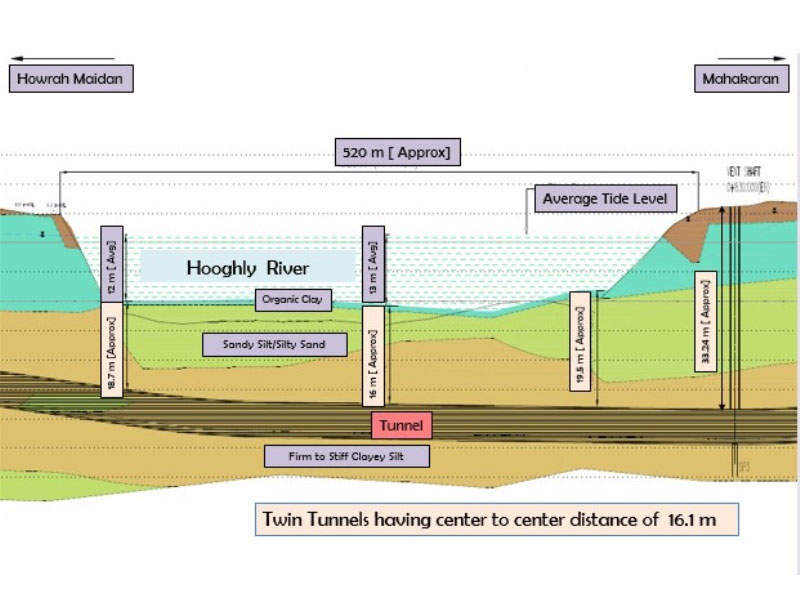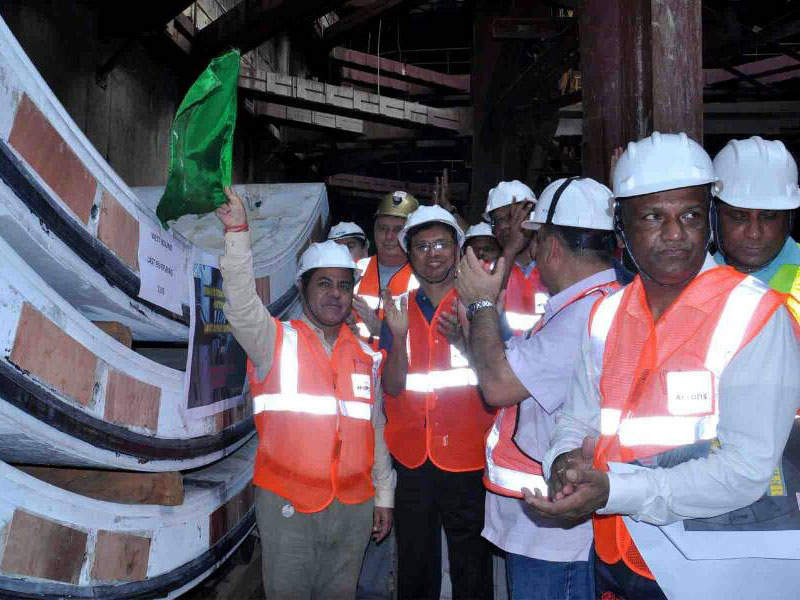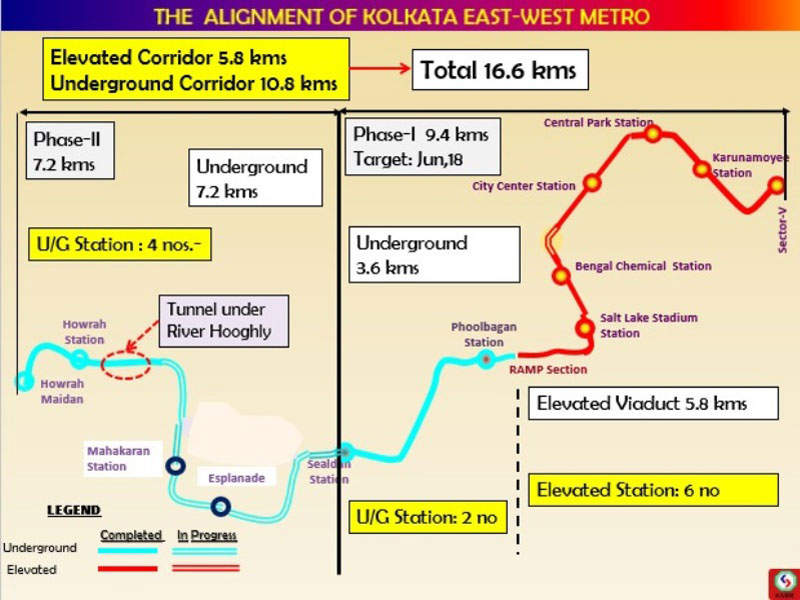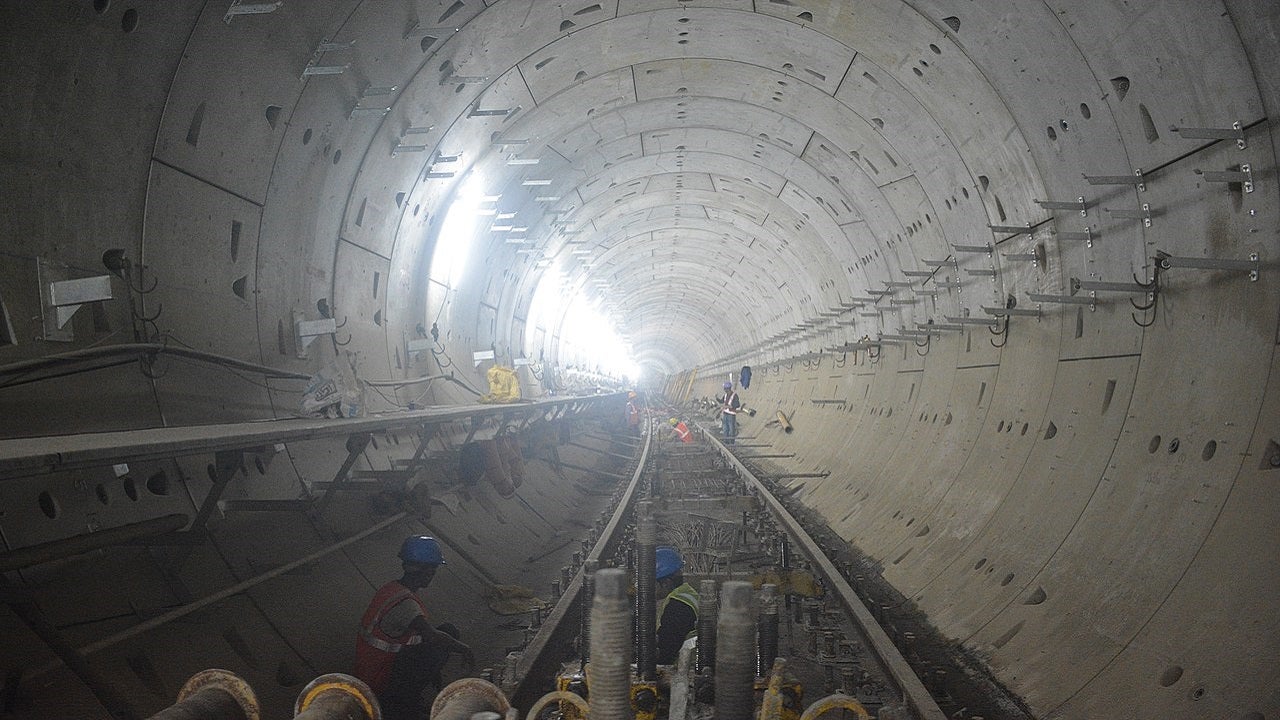The East-West Metro Underground Twin Tunnel project is the 10.8km-long underground section of the East-West Metro project in Kolkata, India. The section includes two underground twin metro rail tunnels, one east-bound and one west-bound.
The East-West Metro Corridor project is a 16.6km under-construction metro rail line connecting the two cities of Kolkata and Howrah. The elevated section of the corridor will cover a length of 5.8km.
The underground tunnel will cross the Hooghly river for approximately half a kilometre necessitating a 520m underwater section of the tunnel making the East-West Metro tunnel the first underwater tunnel in India. The underwater tunnel will be at a depth of 13m below the water while the depth of the tunnel crown extra-dose will be 13m below the riverbed.
Kolkata Metro Rail Corporation (KMRCL) is executing the project with partial financial support from Japan Bank for International Cooperation (JICA). In October 2020, the Government of India approved a revised estimated cost of Rs8,575Cr ($1.17bn).
Phase one of the metro project is currently operational and works on phase two, which includes the stretch between Sealdah station and Howrah Maidan, which began in March 2016. The underground tunnels are scheduled to be completed in December 2021.
Design and construction of India’s first underwater tunnel
The tunnel will have an internal diameter of 5.55m and an external diameter of 6.1m. The spacing between the tunnels will be 16.1m centre-to-centre.
The inner walls of the tunnel are being made with M50 grade, reinforced concrete segments with a thickness of 275mm each. Six of these segments will complete a circular lining of the tunnel’s diameter. The segments are being pre-cast in specialised moulds imported from Korea.
Several protective measures have been taken to prevent water inflow and leakages in the tunnel. Concrete mixes composed of fly ash and micro silica have been used for the segments to minimise water permeability.
The segments are being sealed using a complex grouting process that will fill the space between the segments and the shield of the tunnel boring machine (TBM).
A two-component grout mix, including slurry made of water, cement and bentonite and sodium silicate, is being used to fill the gaps. The liner segments are fitted with German-made neoprene and hydrophilic auxiliary gaskets, which expand when in contact with water to prevent inflow through segmental joints.
Boring the twin underwater tunnels
Boring the underwater tunnels, which are predominantly composed of soft and stiff clay, has been one of the complex challenges of the project.
Two German-made tunnel boring machines (TBMs), named Prerna and Rachna, were deployed for the process.
Equipped with earth pressure balancing (EPB) capabilities, the machines are suitable for projects on unstable terrain or under structures that are sensitive to ground disturbances. They can withstand three times more atmospheric pressure during the boring process.
Each TBM is 8.5m-long, as tall as a two-storey building and has backup gantries extending to 100m. Six generator sets of 1,010kVA will supply power to the boring machines, which are equipped with five motors exceeding 650HP and more than 35 other auxiliary motors. The TBMs will bore up to 15m a day, excavating up to 500m³ of the earth to complete 2.9m of the tunnel.
The two TBMs bored the east and west-bound tunnels in a record span of 66 days, from April 2017 to June 2017. While the first tunnel crossed the river in May 2017, the second one crossed it in June.
The underwater tunnel construction is technologically comparable to the Eurostar high-speed railway service that traverses the Channel Tunnel between the UK and France.
The TBM S-616 Urvi was deployed in March 2021 to construct the final stretch of the East-West Metro, 17m below Sealdah station.
Route and stations of the underground tunnel
The underground section of the East-West Metro project stretches from Phoobagan and Howrah Maidan. The stretch will have a total of six underground stations at Phoobagan, Sealdah, Esplanade, Mahakaran, Howrah and Howrah Maidan. The tunnel will cross the Hooghly river between Mahakaran and Howrah stations.
Safety measures inside the underground tunnel
Emergency evacuation shafts up to 760m in length are being provided inside the tunnel to adhere to National Fire Protection Association (NFPA) guidelines. The evacuation shafts are being provided in Howrah Station in the west and Strand Road in the east to improve passenger safety.
State-of-the-art tunnel ventilation systems are being installed to ensure adequate ventilation during emergencies. Tunnel ventilation fans of 85m³/s, over-tract exhaust fans of 30m³/s, under-platform supply fans of 20m³/s, as well as booster fans will be installed in Howrah station and other appropriate locations.
Continuous walkways are being provided for sidewise evacuation during emergencies.
Contractors involved
The construction contract for the underground tunnel project was awarded to a joint venture between Indian construction firm Afcons Infrastructure and Russian firm Transtonnelstroy. Afcons is also responsible for the construction of three underground stations and other works on the project.
The two tunnel boring machines were ordered from Herrenknecht. ITD Cementation constructed a diaphragm, also known as a D-wall in engineering parlance, which is needed to connect the station to the tunnel dug by the TBM.

